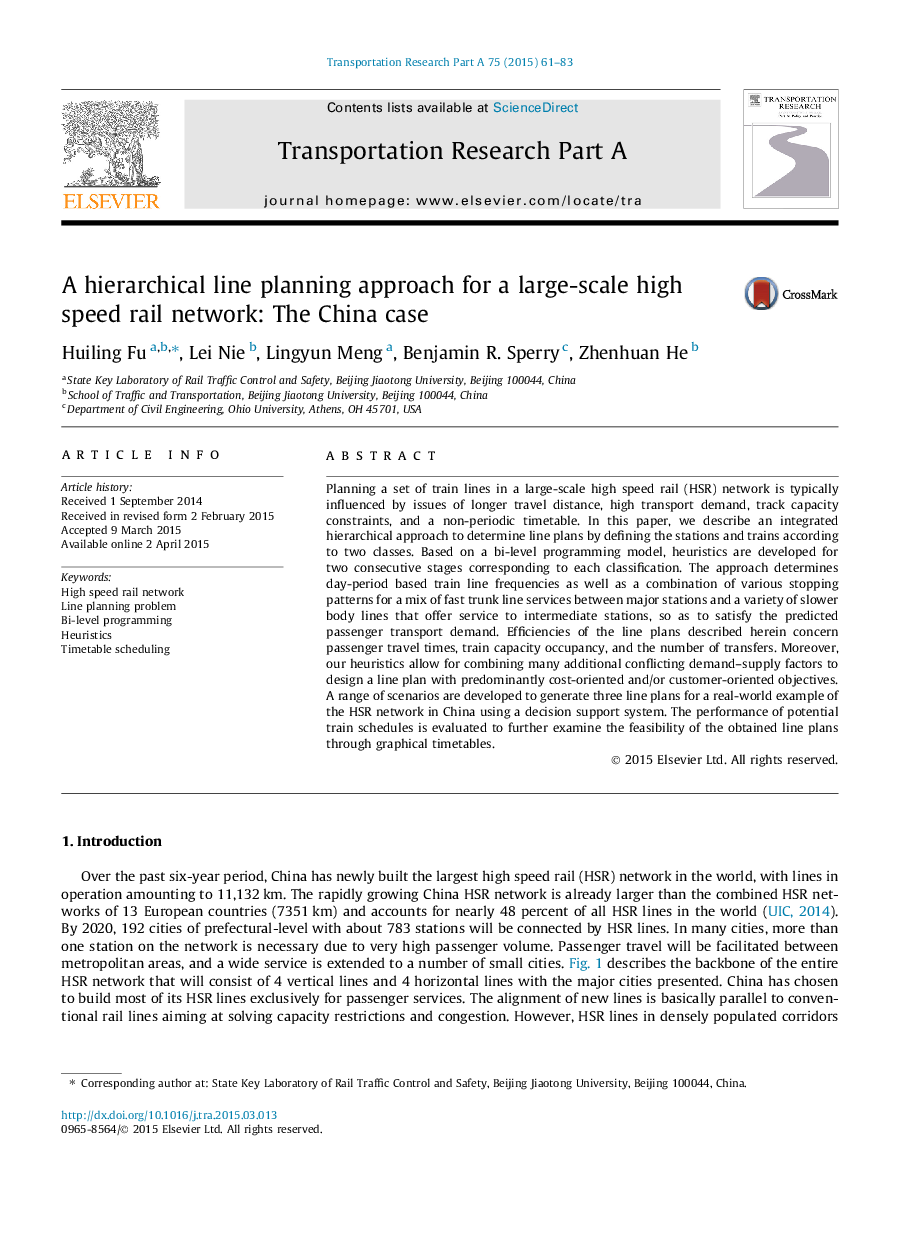| کد مقاله | کد نشریه | سال انتشار | مقاله انگلیسی | نسخه تمام متن |
|---|---|---|---|---|
| 310435 | 533112 | 2015 | 23 صفحه PDF | دانلود رایگان |
• A bi-level programming approach is proposed for solving the line planning problem.
• The model determines daily line frequencies and various train stopping patterns.
• Heuristics enable to generate line plans with customer and/or cost orientations.
• Designed four different graphical timetables prove the feasibility of line plans.
• Timetabling strategies by clustering/balancing train lines are evaluated.
Planning a set of train lines in a large-scale high speed rail (HSR) network is typically influenced by issues of longer travel distance, high transport demand, track capacity constraints, and a non-periodic timetable. In this paper, we describe an integrated hierarchical approach to determine line plans by defining the stations and trains according to two classes. Based on a bi-level programming model, heuristics are developed for two consecutive stages corresponding to each classification. The approach determines day-period based train line frequencies as well as a combination of various stopping patterns for a mix of fast trunk line services between major stations and a variety of slower body lines that offer service to intermediate stations, so as to satisfy the predicted passenger transport demand. Efficiencies of the line plans described herein concern passenger travel times, train capacity occupancy, and the number of transfers. Moreover, our heuristics allow for combining many additional conflicting demand–supply factors to design a line plan with predominantly cost-oriented and/or customer-oriented objectives. A range of scenarios are developed to generate three line plans for a real-world example of the HSR network in China using a decision support system. The performance of potential train schedules is evaluated to further examine the feasibility of the obtained line plans through graphical timetables.
Journal: Transportation Research Part A: Policy and Practice - Volume 75, May 2015, Pages 61–83
